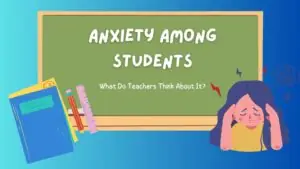In the hallowed halls of academia, where intellectual endeavours hold pride of place, there lies a less-explored divide: the economic chasm separating students. An enlightening discussion has recently stirred up the discourse, unveiling the stark wealth contrasts among university-goers.

✅ AI Essay Writer ✅ AI Detector ✅ Plagchecker ✅ Paraphraser
✅ Summarizer ✅ Citation Generator

Key Takeaways
- The economic background of students at universities varies dramatically, ranging from those who can afford luxuries like Lamborghinis to those who have to work while studying.
- Wealthy international students often live in a different reality than their less affluent counterparts.
- Financial differences among students can create social divides and lead to issues of identity and belonging.
These candid personal stories bring to the fore how this economic disparity shapes and influences students’ university experiences
Unpacking Students’ Experiences
The thread begins with a student named Tom reminiscing about his time at a public state university. He noticed a group of wealthy foreign students, who would park their luxury cars in faculty-only spots and pay daily fines without a second thought. Tom reflects,
“I’m sure their college experience was more enjoyable than mine, but I probably got a better education.”
Meanwhile, Samantha, a student at a prominent Big Ten school, was often astounded by the affluence of the international students around her. She recalls her sister’s friend, a roommate of a wealthy international student, who received a luxury car as a parting gift when the student returned home.
Adding another layer to this reality is John, a former PhD student at a prestigious institution, who taught classes comprising students from extraordinarily wealthy backgrounds. Their casual talks about private islands and family jets made John’s modest holiday plans seem trivial.
On the other side of the coin, Anna shares her dumpster diving experience at the end of the academic year. She found a plethora of valuable items discarded by students who seemingly didn’t see the worth in donating or selling them. From a Hydro Flask to a MacBook, the finds highlighted the insouciant disposal of pricey possessions, illuminating a stark contrast with students like Anna, who would treasure these items.
George brings up a unique perspective: He received resentment from fellow students when they found out his tuition was paid by his parents. Unbeknownst to them, his family had made numerous sacrifices to save money for his education.
Kiera, on the other hand, shared her struggle as a first-generation student, balancing a full-time job while attending school, creating a stark contrast with her peers taking extravagant Spring Break trips. However, she expresses her aspiration to one day provide for her own children in the way that her wealthier classmates’ parents did for them.
The Main Point
These anecdotes underscore that while universities may be melting pots of different cultures and ideas, they are also microcosms reflecting society’s broader economic disparities.
Deciphering the Jargon: Grants, Loans, and Scholarships Explained
As we dive deeper into the discourse surrounding economic disparity within universities, it’s essential to understand how financial aid comes into play. Scholarships, grants, and loans often serve as lifeboats for students navigating the choppy waters of university finances.
Let’s demystify these terms and understand how they work.
- Scholarships are typically merit-based, awarded to students who have excelled in academics, sports, or other fields.
- Grants, on the other hand, are usually need-based and don’t require repayment. They are essentially free money provided by the government, an institution, or a private organization to help students cover their education costs.
- Loans, conversely, must be repaid. They can be sourced from federal agencies or private lenders, and their repayment terms can vary significantly.
Understanding the specifics of these financial aids can be crucial for students seeking to ease their financial burden while pursuing their academic dreams.
Related Stories:
The Great Student Loan Debate: What Happens When the Payment Pause Ends?
US Schools Face Enrollment Crisis Post-Pandemic
Apprenticeships: A Rising Alternative to Traditional College Education in the US
Follow us on Reddit for more insights and updates.





Comments (0)
Welcome to A*Help comments!
We’re all about debate and discussion at A*Help.
We value the diverse opinions of users, so you may find points of view that you don’t agree with. And that’s cool. However, there are certain things we’re not OK with: attempts to manipulate our data in any way, for example, or the posting of discriminative, offensive, hateful, or disparaging material.